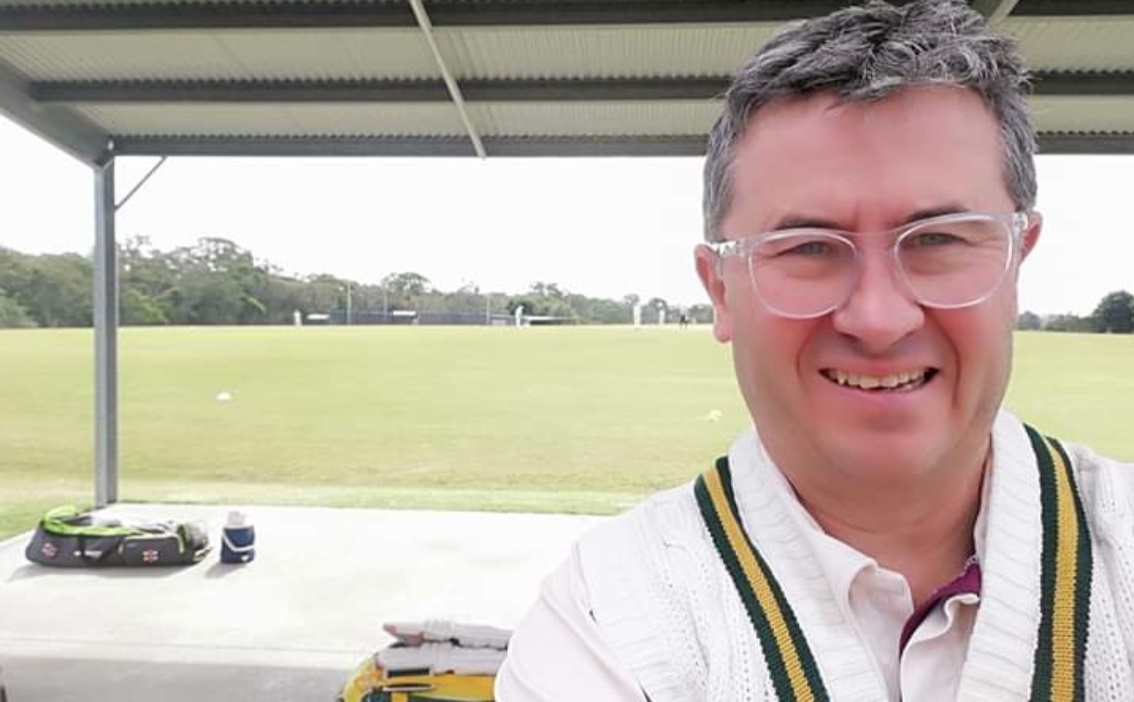My Best Grade team - Greg Bubke 1976 to 1989
Greg Bubke | June 19, 2023

I was a local product of the Easts club, starting in the schoolboys (u13) grade in 1970. The club had relocated to Bottomley Park from Langlands Park and a brand new clubhouse (later to become the famous Crab Pot) was in the process of being erected.
I remember Tony Dell providing some bowling advice to us which was a big buzz for us all. In those days the grade structure was very different to today. Intermediate (U15) followed schoolboy, then U18, followed by the open grades which started at C Grade, followed by B Grade, Reserve Grade and A Grade.
My journey in First Grade commenced in January 1976 when I was selected to play against Norths at Windsor Oval (a fun place to bat) and finished in February 1989. In between, my time was broken from 1980-85, while I worked in Gladstone for the Commonwealth Bank. During this time I played extensively throughout Central Queensland.
Selecting my team therefore excludes the “Gladstone” years and any players who achieved First Class honours.
A not so “fun” fact (for me anyway) is that Easts won premierships the year after I went to
Gladstone, the year after I retired, and my Gladstone team the year after I left. Perhaps a message in there!
1. Greg White
A club stalwart who came through the junior and lower grade teams on the way to becoming the First Grade opener. Whitey featured in the premiership side of 1979/80 and at his best, drove bowlers to despair by despatching them through or over midwicket anywhere from leg stump to 18 inches outside off. Provided non-stop chat in the field, not always directed at the opposition, but always funny. Continued playing down the grades till the move to the Redlands in the mid-90s. Played many more seasons at Wolston Park where he is now full time curator.
2. Kent Waddell
Came to club from Northern NSW in the early 1980s and cemented his spot as a stylish and reliable opening bat. Was a Shield Squad member at one stage, but never got a call up. Kent was an outstanding “slipper” with a great pair of hands who snared many great catches in the cordon. Even withe best of intent, one could not say that Kent’s bowling would inspire any terror in opposing batsmen. Did a lot of coaching with Sam Trimble and Brian Gaskell at the old Gabba nets.
3. Mal Freeman
Came to the club in the early 80s, via his home town of Beaudesert and Wynnum Manly. “Rowdy” as he is universally known was a classy striker and technician who led the club to premiership success in 1989/90, in tandem with his great mate Greg Ritchie. He consistently led the club aggregates year in year out and highlighted that with a magnificent double century against Colts at the Gabba. One of those who somehow kept being overlooked for higher honours.
4. Peter Morgan
Peter or “Morgo” was a local schoolboy prodigy from primary school who successfully transitioned into First Grade from High School. This was helped by the support provided by Darryl King, who kept a fatherly eye on all young players coming into the side, but developed a strong friendship with Peter. Morgo was a compact player with a wonderful technique, who could play shots all around the ground. He was also an accomplished “slipper” with wonderful hands.
5. Greg Ellis
Gifted right hand bat who was one of the best strikers I have ever seen. His six at Uni batting from the river end, cleared the student residential tower to the left of the old club house, remains the biggest I have seen. On his day made batting seem ridiculously easy and could turn a game very quickly. Was also an outstanding fieldsman and a handy medium fast bowler who probably underrated his ability.
6. Paul Stenhouse
Rock, Rocky or Stenny came to club from Rockhampton in the mid-1980s. No prizes for guessing the source of his nickname. I had come across Rocky playing for Gladstone against Rockhampton and knew something of his all-round abilities. Rocky moved straight into first grade as a strong hitting middle order batsmen and a “seam up” opening bowler with a very handy bouncer. A strong fields-man in any position, who in his day had one of the most powerful arms in club cricket.
7. Peter Evans – Captain
“Bench” as he is universally known, was an allrounder who could open the batting and/or bowling, slot down and hold the middle order together or dry up an end with his left arm medium pacers. Time and again Bench would rescue lost causes with bat and/or ball, by maintaining a cool head. He was also a shrewd captain and man manager who led the club’s 1979/80 premiership success.
8. Craig Jesberg
Came to the club from Ipswich in the mid-1980s and made an immediate impact as a thoughtful and inspiring opening bowler and a handy middle/lower order batsman. With Paul Stenhouse at the other end developed a very useful new ball pairing. Between Jezza and Stenny they could also have sledged for Australia. Jezza was always keen to have ball in hand, even when conditions were not suited. Player of the 1989/90 premiership final.
9. John Salter
Without doubt the most competitive cricketer I have meet. Although John (aka Hook) achieved greater acclaim in Rugby League as a First Grade and state rep, cricket is his passion. As a bat he made the opposition work for his wicket, while his right arm “straight breaks” claimed many an unsuspecting batsmen. Hook’s contribution on and off the field helped build the club for future success, as well as developing a hard but fair approach on the field. He is continuing this work now with Queensland Cricket. Always first for a beer after the game with the opposition.
10. Alan Kennedy
One of the great warhorses of club cricket with over 200 first grade wickets at a frugal average of around 21. Could hold an end up or make the ball wobble when circumstances permitted. He almost single handedly ran the club for a couple of years. His greatest success was convincing my Mum and Dad, Betty and Cec to take over the running of the “Crab Pot”. That is a whole other story.
11. Tony McQuillan (Wicket Keeper)
Club keeper on my debut. A very clean and competent gloveman who made few mistakes. He led the way in setting fielding standards and demanding continuous improvement by all. Other keepers had better batting, but Tony was the best pure keeper. Tony also went on to become an international umpire during the 1980s.
12. Shane Edmonds
Shane was a Gold Coast product who came to club in the mid-1970s and did the trip up to play train at Bottomley Park for the next 10 years. This was prior to the Gold Coast entering the grade competition. Shane was a dependable lower order bat and a thoughtful left arm finger spinner. Drift, flight and spin were Shane’s stock in trade and he used these skills effectively, to dismiss many quality batsmen.
Manager - A joint role here, shared by Barry Spencer and Darryl King. These two club legends would ensure this team not only played hard and in the right spirit, but had a lot of fun along the way.
Barry was also a great mate of Peter Burge’s and would spend many Saturday afternoons with him circumnavigating Bottomley Park, listening to the races and picking Shield sides. As a former State Player Darryl, played hard but fair, but was always first to congratulate the opposition win, lose or draw and offer a cold beer.








